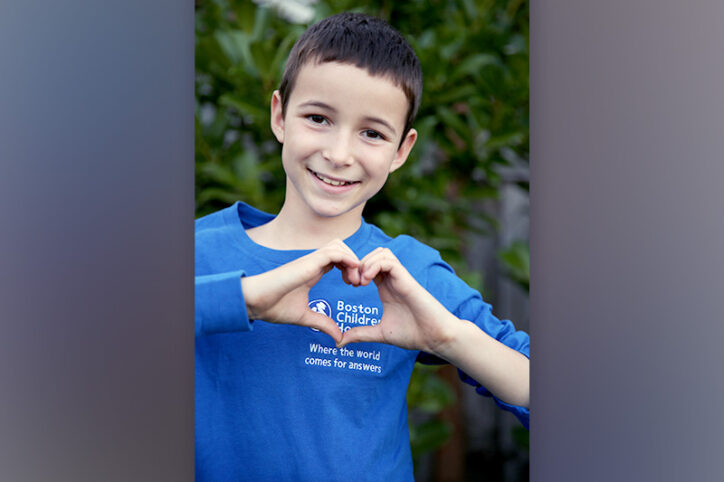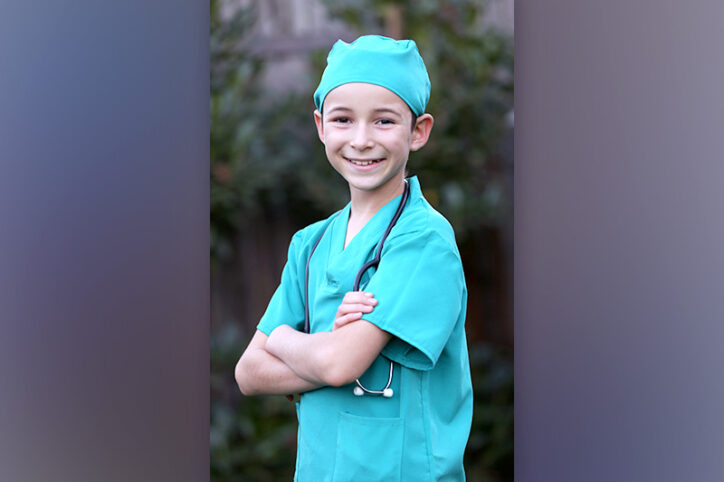One day closer: Second opinion for urologic pain changes Iker’s life at last

Like many kids, Iker Guzman enjoys playing with LEGO toys. But there was nothing lighthearted about the day a few years ago when he used the tiny bricks to spell out one word on the floor: HELP.
It was a message his parents, Elsa and David, had already taken to heart. For years, they had been searching for insight about his chronic urologic pain — pain that was so severe that on his worst days, Iker simply shut down, stopped speaking, and took to his bed.
“He couldn’t understand why this was happening to him,” says Elsa. “But neither could we, despite all the efforts and visits to doctors.”
Pain, and a plea for help
Iker’s long journey had begun when he was 5, with a trip to his local emergency room in Northern California. There, he was diagnosed with kidney stones. When the problem didn’t resolve, he started seeing a urologist and a nephrologist, but MRI scans and X-rays didn’t show any anatomical anomalies that might be responsible. Still, the pain persisted.
In fact, it got worse. By the time he was 10, Iker — previously an excellent student — needed to lie down during class, often having to miss school altogether. He had trouble being active, required crutches to get around, and his relationships with his classmates suffered. When he created his plea for help in LEGO bricks, as well as other notes written in pencil that his parents found around the house, his parents knew it was time to push even harder for answers and sought a second opinion.

Second opinion offers new hope
Through this process, they connected with Dr. Richard Lee, a urologist at Boston Children’s Hospital. “He responded with a long report and said he was almost certain of Iker’s diagnosis,” remembers Elsa. “He said he would love to treat him. Iker was in tears the day we told him that we found a doctor that could treat him.”
The family jumped at the chance. “With one phone call, we had seven appointments booked and knew what to expect at Boston Children’s,” she says. “In California, we had to wait months just for an imaging test.”
Meanwhile, Iker counted down the time to his appointment on a calendar, marking “one day closer” to his visit in April.
Yet when he underwent testing in Boston, the images were not much more revealing than they had been back home. Elsa recalls that the day was drawing to a close. Iker was emotional, worried that he might not finally get a resolution after all.
“Dr. Lee ordered one more test. People had been getting ready to go home, but they stayed to perform a CT scan on Iker,” she says.
It was the test that changed Iker’s life. At 7 p.m., Dr. Lee spoke with the family again. The CT scan confirmed his suspicion, but in both kidneys: Iker had a ureteropelvic junction (UPJ) obstruction resulting from compression of the ureter by a number of surrounding blood vessels.
Finally, a diagnosis — and treatment
In a UPJ obstruction, there is a blockage between the ureter (the tube that connects a kidney to the bladder) and the kidney, which can slow or block the flow of urine. Severe UPJ obstructions can cause abdominal pain — sometimes even as serious as what Iker was experiencing.
“Other doctors we visited in the past said Iker just had muscle pain, after having investigated and discounted the possibility of traditional cases of UPJ,” says Elsa. “Dr. Lee fought the whole time to find the source and never gave up.”
Following confirmation of the diagnosis, Iker underwent robotic surgery during which Dr. Lee was able to correct the blockage on one side. Although Dr. Lee had performed a less-invasive robotic surgery that used smaller incisions, Iker felt anxious early on in his recovery. When he learned that he still had a second blockage, he balked: He just couldn’t imagine going through another surgery and recovery period.
Fortunately, Iker soon began feeling better — and, with some encouragement from his parents, Dr. Lee, and a Boston Children’s social worker — he was ready to try again. Thanks to the hospital’s team of nurses, child life specialists, and social workers — and Iker himself — he was much less anxious about his second surgery.

Paying it forward
That was last summer. Today, Iker is “unrecognizable” following treatment, says his mother. No longer quiet and withdrawn, he smiles, laughs, and jokes. He’s started playing water polo, making friends in fifth grade, and painting. “Even his penmanship has improved, because he can focus and is no longer in pain.”
And he plans on paying his gratitude forward. Iker asked for an anatomy book for Christmas and hopes to someday become a pediatric urology surgeon. “I don’t want another kid to go through what I went through,” he says. He even dreams of working at Boston Children’s one day.
It’s a change for which his parents will also be forever grateful. “Dr. Lee told us he wouldn’t give up on our son until he had an answer,” says Elsa. “We truly believe he saved Iker’s life.”
Learn more about the Department of Urology or request a second opinion.
Related Posts :
-

Building a better bladder: Reconstructive urologic surgery helps Mikey thrive
When Mikey Tibbetts’ parents, Johanna and Matt, take him trick-or-treating, the process can last for hours. “He knows everyone and ...
-

‘Another level of care’: Second opinion solves Joey’s rare urologic condition
When Max and Shana arrived at Boston Children’s Hospital last year with their young son, Joey, their care team “...
-

Bladder surgery after Ewing sarcoma helps Paralympian get back on the slopes
Thomas Walsh’s email signature includes the phrase, “No struggle, no progress.” It’s a motto that Thomas, 27, has lived ...
-

‘Worth the trip’: Aiden and his family found help for chronic pain in Boston
Aiden Kozak loves playing volleyball — and he’s good at it. He was even recently named one of the top 50 ...





